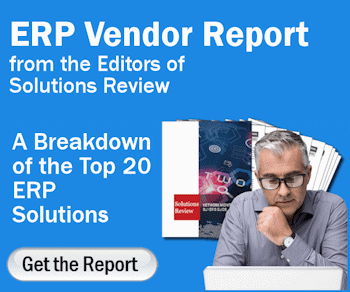How Supply Chain Technology Can Prevent Delays


As part of Solutions Review’s Contributed Content Series—a collection of articles written by industry thought leaders in maturing software categories—Greg Price, the co-founder of Shipwell, has compiled two articles explaining how supply chain technology can resolve the supply chain industry’s resource concerns. In this entry, he addresses the ways these technologies can prevent delays.
There will always be a need for speed in terms of shipping times. From outpacing competitors, stocking shelves, and preventing spoilage to minimizing the time spent managing logistics so that other tasks can be handled, speed and efficiency are paramount in shipping. And today, the need for timely access to the critical products and materials businesses need to keep running has never been more important.
With more goods being shipped, more volatility in the market, and more pressure from customers, how can businesses continue to deliver speed and efficiency if they can’t hire fast enough to keep up? The ongoing labor shortage in America is impacting enterprises at all levels, and the supply chain is among the industries most hard hit. Changing consumer behaviors have created a surge in open positions for new roles to keep up with demand. Yet despite best efforts at different levels of the supply chain, from ports and warehouses to shipping carriers and logistics departments, shortages persist.
The truck driver shortfall hit 80,000 drivers in 2021 and is expected to grow to 160,000 by 2030. Meanwhile, 73 percent of businesses report challenges in hiring warehouse workers to address materials handling, logistics, and supply chain operational challenges. Burnout among supply chain management saw the separation rate for that role increase by over 28 percent last year.
Even as demand for efficient shipping increases, every level of the supply chain is trying to do more with less—and traditional methods can’t adapt quickly enough. However, new technology can provide the support needed to not only keep up with the demands of the market and supply chain but also to foster increased efficiency amid current resource-related concerns like labor shortages.
How to Prevent Delays During the Booking Process
With over 70 percent of America’s freight transported by truckers, they are among the essential workers globally. Unfortunately, they are also in short supply with a growing shortage of available drivers. As this truck driver shortage ripples through supply chains, businesses find it increasingly challenging to plan and move goods quickly and efficiently. These delays in securing reliable truck capacity mean that goods are often left stuck in limbo, leading to longer delivery times, product shortages, and inadvertent overstocking. However, new technology could help bridge the gap and alleviate the driver shortage.
Expanding capacity options through integrations
By extending your capacity network to include more options from multiple modes and carriers, you can avoid or at least limit disruptions caused by carrier capacity shortages and decrease costs using digital automation. However, the traditional practices for building an extensive carrier database are highly manual and time-consuming. Even without factoring in the time needed to review performance and select a new carrier, it can take weeks and months to onboard each addition to a network. To bolster your existing network quickly to create partnerships across the lanes of your choice, look into Transportation Management System (TMS) options that include a vetted network of integrated carrier options.
Automating planning for greater efficiency
Logistics planning can help optimize shipments for maximum efficiency and is one of the most effective ways to ‘do more with less,’ however, traditional manual processes also make it one of the most challenging to get right. Automation can help to alleviate this challenge. By automating planning—order optimization, carrier selection, and execution—shippers can decrease tender lead time, reduce costs, improve the relationship with carriers, and improve consolidation opportunities to reduce the number of trucks and road miles needed to move shipments.
To automate this process and ensure consistent efficiency, you need end-to-end visibility and advanced analytics to assess each order’s details, including size, weight, locations, pickup, and delivery times. With technology capable of considering all of these factors, shippers have improved truck utilization and routing efficiency, reducing road miles by over 40 percent while delivering cost savings of between 30 and 40 percent.
Leveraging data and analytics for more strategic planning
One big problem with the driver shortage is unpredictability around capacity levels, performance, and pricing. Every supply chain comes with risks, but understanding them is key to keeping them running. So how can organizations accomplish this? It all boils down to using data less reactive and more proactively.
Unfortunately for many shippers, while supply chains tend to generate vast amounts of data, understanding that data is a challenge for most in the industry. Many don’t have clear insight into factors like how much they spend, how many shipments they manage, or which lanes are performing poorly, which means they can’t effectively negotiate or plan their network. Even with that information, most SMBs don’t employ people with operations or analytics backgrounds capable of interpreting that data to deliver results.
Collecting and centralizing your supply chain technology data makes it possible to interpret it in real-time through a single platform. By digitalizing operations and better understanding the data around routes and supply capacities, demand can be better managed, and importantly, so can drivers’ workload. This can also build a digital foundation and enable more transformative change through artificial intelligence and machine learning for improved predictive abilities.






















